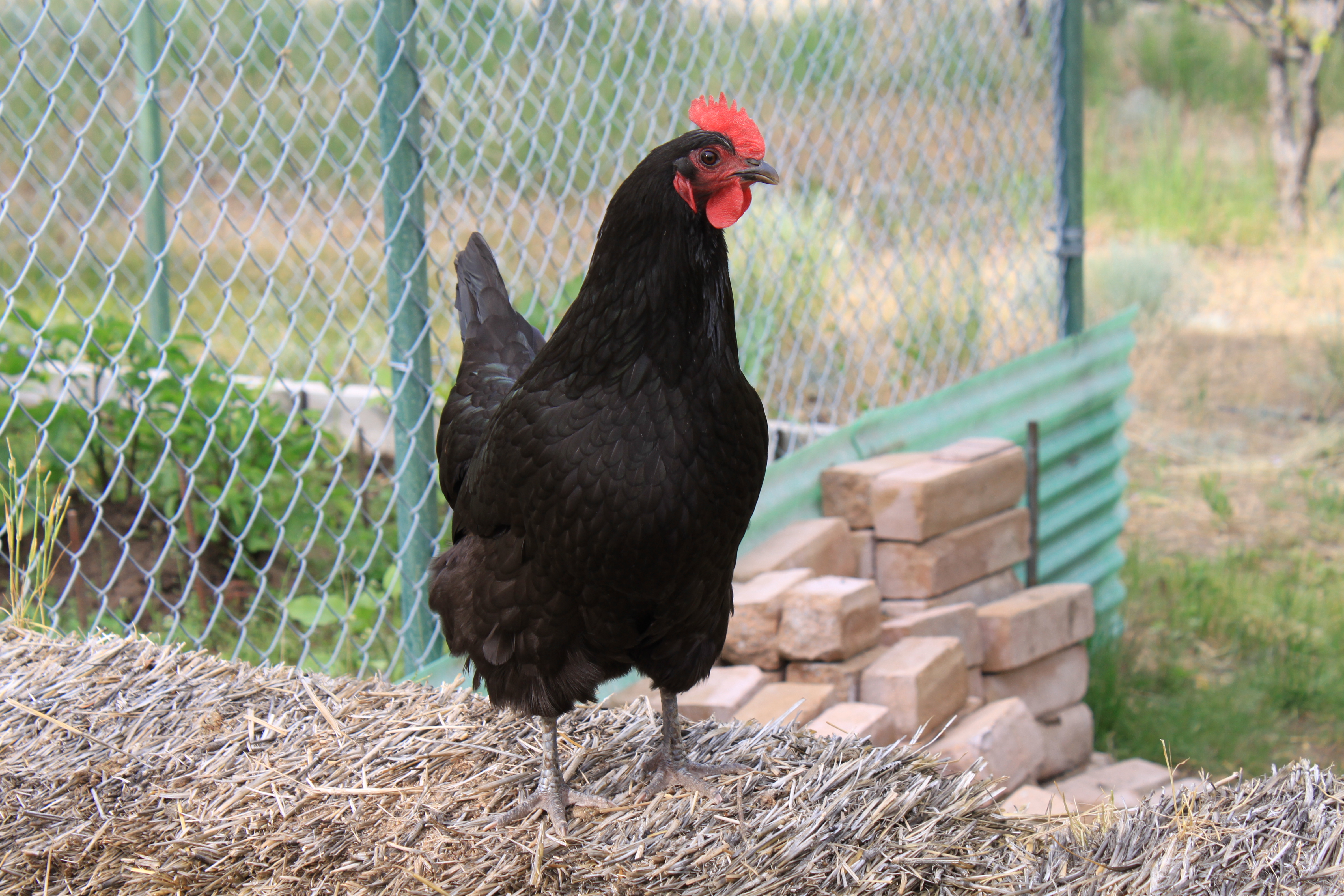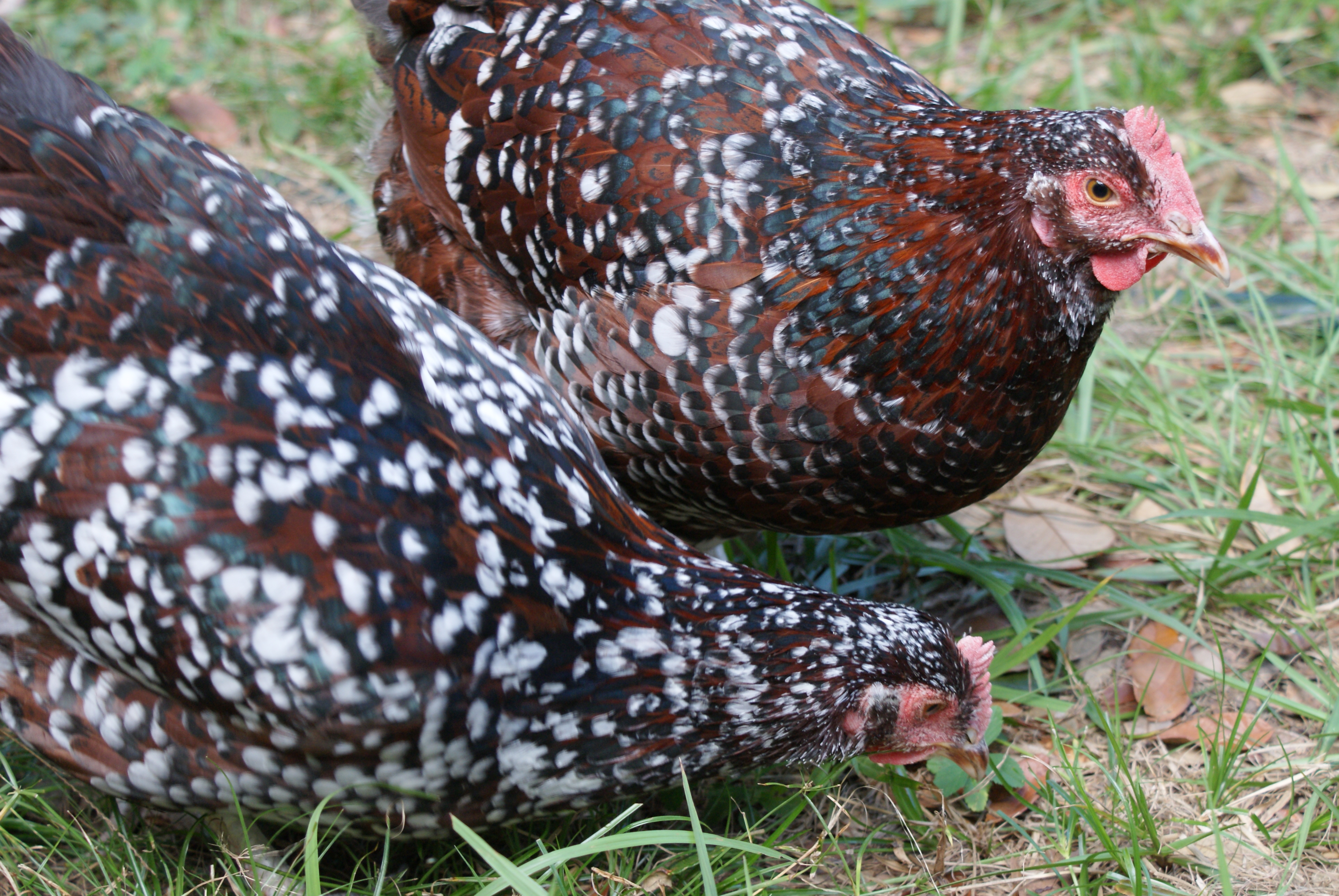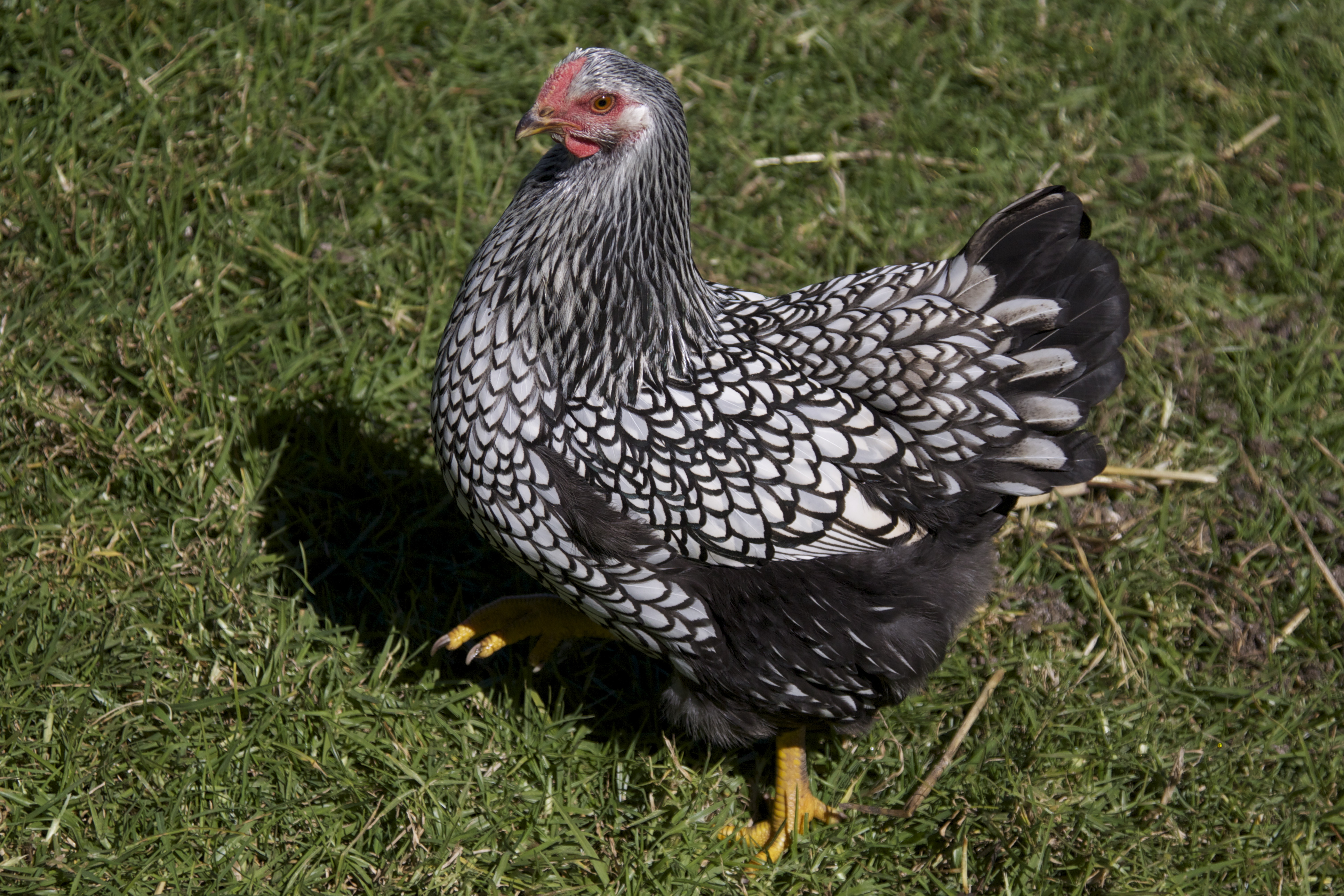Moult is the shedding of old feathers and the growing of new ones. Chickens do this usually once a year, between late Summer and early Autumn, but it varies between individuals. In chickens, the whole process may take up to two months.
Moulting is a very energy expensive process, and you can expect your hens to stop laying while they do this.
 |
| Moulting hen. Credit: Sierravalleygirl Permission: CC BY-NC 2.0 |
Care of Moulting Hens.
Hens do not usually need a helping hand during this process, but you must understand that they are much more susceptible to disease and illness while they moult because much energy is being spent. It is particularly important at this time to make sure your hens have a balanced diet. Keep stress to a minimum and avoid adding new birds during the moult.
Although your chickens should not shed most of their feathers at once, some do! Sadly, I do not have any pictures of Bonnie from a couple of years ago when she moulted practically all her feathers except a couple of wing and tail feathers. Although this is unusual it does happen. This year, one of my bantams Nutmeg did a similar thing, but not quite so bad (see photo). In this case, she is now in a cage in the conservatory where she will be warmer until she re-feathers. Often even birds in her state should be left outside with the other hens if it is not too cold, but it has been windy, rainy and cold here so she has had to come inside. If you notice birds shivering or fluffing up whatever feathers remain then they should be brought indoors and warmed up. Without feathers, birds are not water proof so quickly get chilled when it rains.
If you notice bloodied feathers or any kind of scabs/blood they need to be separated from the rest of the flock until the new feathers grow through. This is because sometimes other hens will peck at the feathers if the chickens don't have enough protein, so give them some mealworms, boiled and crushed egg (shell included), a little meat and sunflower seeds.
 |
| My moulting bantam comes into the conservatory to warm up! Credit: birdbrain99 (Author) |
If you notice bloodied feathers or any kind of scabs/blood they need to be separated from the rest of the flock until the new feathers grow through. This is because sometimes other hens will peck at the feathers if the chickens don't have enough protein, so give them some mealworms, boiled and crushed egg (shell included), a little meat and sunflower seeds.
 |
| New pin feathers coming through. Credit: birdbrain99 (Author) |
When the new feathers begin to come through, they are called pin feathers. Pin feathers are growing feathers that are wrapped in a protective sheath made of keratin. They are very delicate at this time and so many chickens will not enjoy being handled, and may struggle, damaging the growing feathers. For this reason, handling should be kept to a minimum whilst they moult.





























